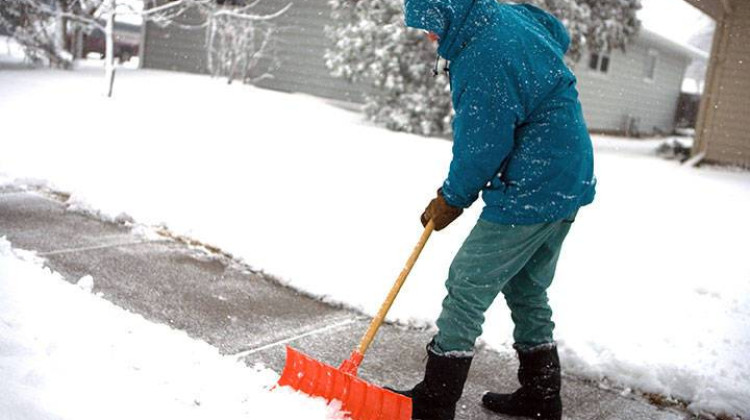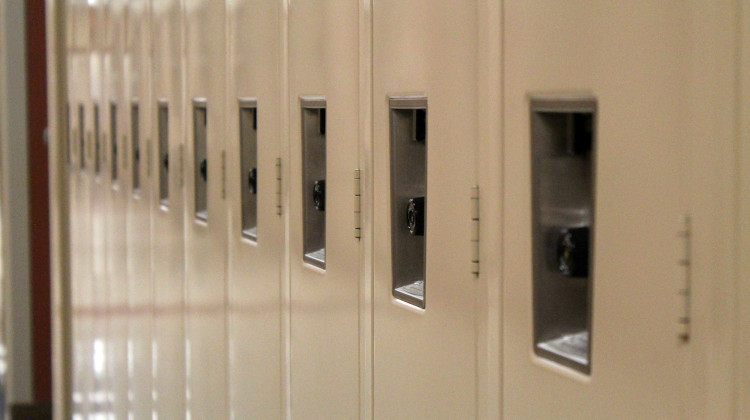As Indianapolis Mayor Joe Hogsett begins his third term and the City-County Council convenes a new session, WFYI mapped certified election data from the Marion County Board of Elections to understand how the 2023 election played out.
The mayoral results map below reflects the “margin of victory,” or the percentage of votes the victor won over their opponent. The total voter turnout map shows the total ballots cast in the election as a percentage of the total number of registered voters in that precinct.
Some clear patterns emerge in the mapped data, and you can listen to an interview about what we can learn from the maps at the top of this post, or read a transcript of it below. Overall, the maps begin to explain how the election played out and give us clues about what's to come in the 2024 elections.
Interactive maps
Hover your cursor over the maps to see the data.
WFYI has made every effort to ensure the data is accurate. Please report any inaccuracy or error so we can correct it.
What do the maps show?
The maps show mayoral election results and voter turnout by voting precinct. Voting precincts are not the same as council districts but they are associated with them. There are 25 City-County Council districts, and all of them changed during redistricting. The city also expanded the number of precincts from 600 to 621.
Precincts are an administrative unit that do not determine the winner of an election — but precincts provide a finer level of detail about voting patterns across the city. A candidate must win a majority of votes citywide in order to clinch the nomination.
What more can we learn from the maps?
WFYI’s Jill Sheridan sat down with University of Indianapolis Assistant Professor of Political Science Laura Merrifield Wilson last year to look at the maps and find out.
Wilson: I think this is a treasure trove of data. And it's really neat to see the visualization in terms of the individual breakdown in areas. Both in terms like – we look at the margin of victory for the mayoral race, which was a fascinating race this year and historic in a number of ways. We saw a marginal increase, and I'm a glass half full kind of gal. So I thought it was important to see where the voter turnout was really high. And where it was less significant, I think too was really great to see.
Sheridan: So these maps did come after recent redistricting in Marion County. What do you think of the impact of that redistricting on election night?
Wilson: I think that whenever we look at redistricting, the goal is to be able to create a concise population that is represented by one person that's generally representative of the area and the idea of compactness. We don't talk about that in local redistricting as much as we do on a national level – we talk about congressional redistricting – but you're putting together not just a group of people who have nothing in common, but they are connected not only by their City-County representative, but by the area in which they live.
Sheridan: And when we look at the maps, we can see especially on the mayoral map, the city is divided – very heavily divided, north and south, on who voted for the mayor. What do you think that tells us historically here in Indianapolis?
Wilson: Well, I think this reaffirms some of those socioeconomic divisions and the idea the south side was very working class. You're talking Decatur, Perry, Franklin Township, just about as red as you can be, especially some of those south or southeastern parts, rather, Franklin Township. And the rest of the city is almost exclusively being Democratic. And I think that's been consistent. Historically.
Sheridan: It's interesting looking at the maps for the mayoral race. Again, when you sort of see these pockets pop up – is that something typically that we have seen here in Indianapolis?
Wilson: Sometimes to me that says, okay, a candidate is resonating differently. There's something unique going on in that community or that neighborhood. The old phrase or adage we would use is saying all politics is local. But those little pockets do, I think, express some of that difference, where it's not going to be very clearly just oh, everyone around here is one party or another. I think that's where you see something different going on in that neighborhood and community, it could be a response to certain issues or to the candidate. But those in some ways are the most fascinating, because they're the deviations from the expectation.
Sheridan: Looking at the voter turnout map now, we're seeing some really interesting trends here as well. I know generally voter turnout, it was up here a little bit. We had some more people out at the polls.
Wilson: Which I think is important. We always like seeing high voter turnout, because that means people are interested, they're engaged, they're informed, they're educated, they're paying attention, right? They feel invested. But realistically, it tends to be pretty low for local elections. And I think the modest increase here is worth noting. I do wonder, especially because we're coming up to a presidential election cycle – we saw good numbers in 2020. We saw good numbers in 2016. Would we expect to see those kind of things in the future? And especially given how easy the city of Indianapolis and Marion County have made it to vote with early voting centers, [and] with the ability to vote in any area on Election Day.
Sheridan: And also looking at some of these precincts – looking in the southwest side of town, on the east side of the town, with very low voter turnout. Does that tell us anything, do you think?
Wilson: You don't necessarily have competition in terms of the City-County Council. And if you don't feel like – of the two things you're gonna vote for, 50 percent of them are already decided – it's going to depress voter turnout, because they don't see the incentive and the value and taking the time to do that. We saw several races that may have been competitive in the primary, but by the time you got to a general, you had one candidate, one choice, and that's certainly going to have an impact in terms of voter engagement and turnout.
Sheridan: Now I know you kind of touched on it, but looking at this voter turnout map – do you think it tells us anything else for next year, which is going to be a big election year?
Wilson: Yes. I think it'll be interesting to see in terms of overall turnout and engagement. What I would want to see is – in those pockets where we had really high voter turnout, is that representative of the district, of the constituents, the people who live there. They're just very politically engaged and involved, or was it something unique to the Hogsett-Shreve race or their City-County Council race, and we'll be able to look at that. Hopefully we have the same data. Again, we can collapse it and say okay, what looks different from 2023 to 2024.
Sheridan: Thank you so much, Laura, for coming in today.
Wilson: Thank you.
Contact data journalist Zak Cassel at zcassel@wfyi.org.
Contact WFYI city government and policy reporter Jill Sheridan at jsheridan@wfyi.org.
 DONATE
DONATE








 Support WFYI. We can't do it without you.
Support WFYI. We can't do it without you.